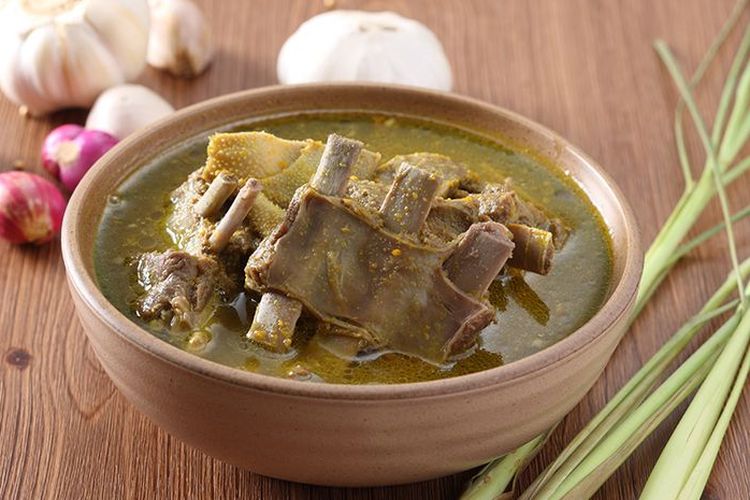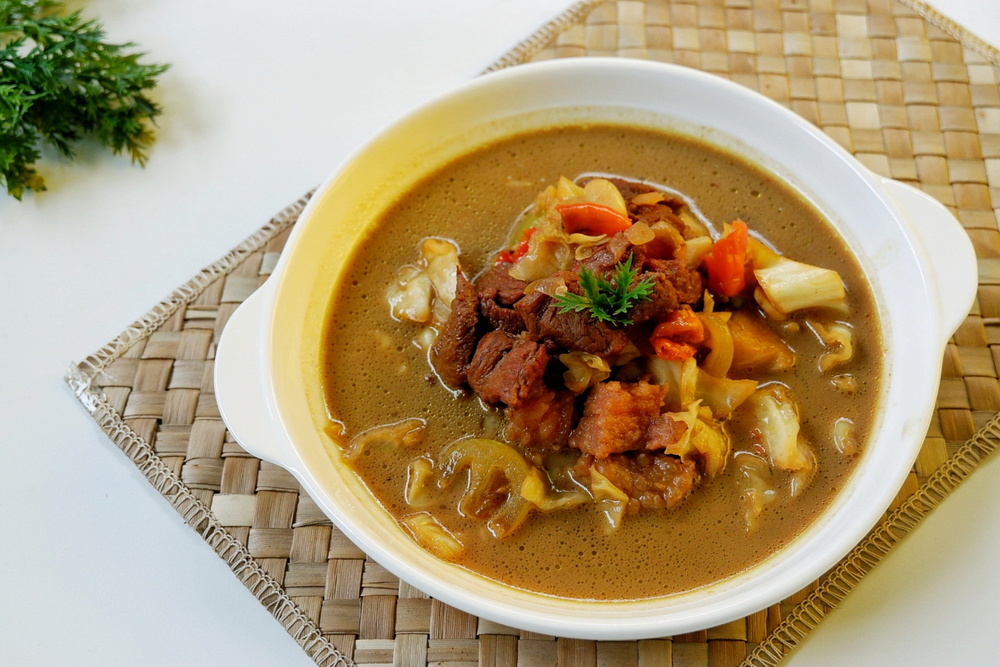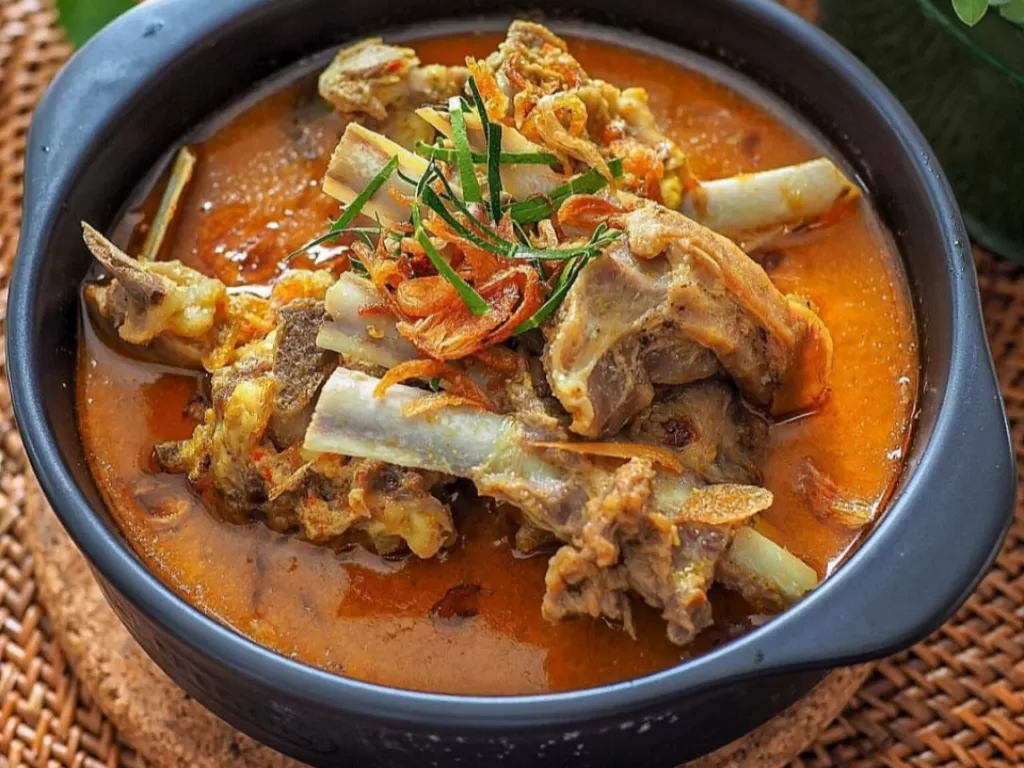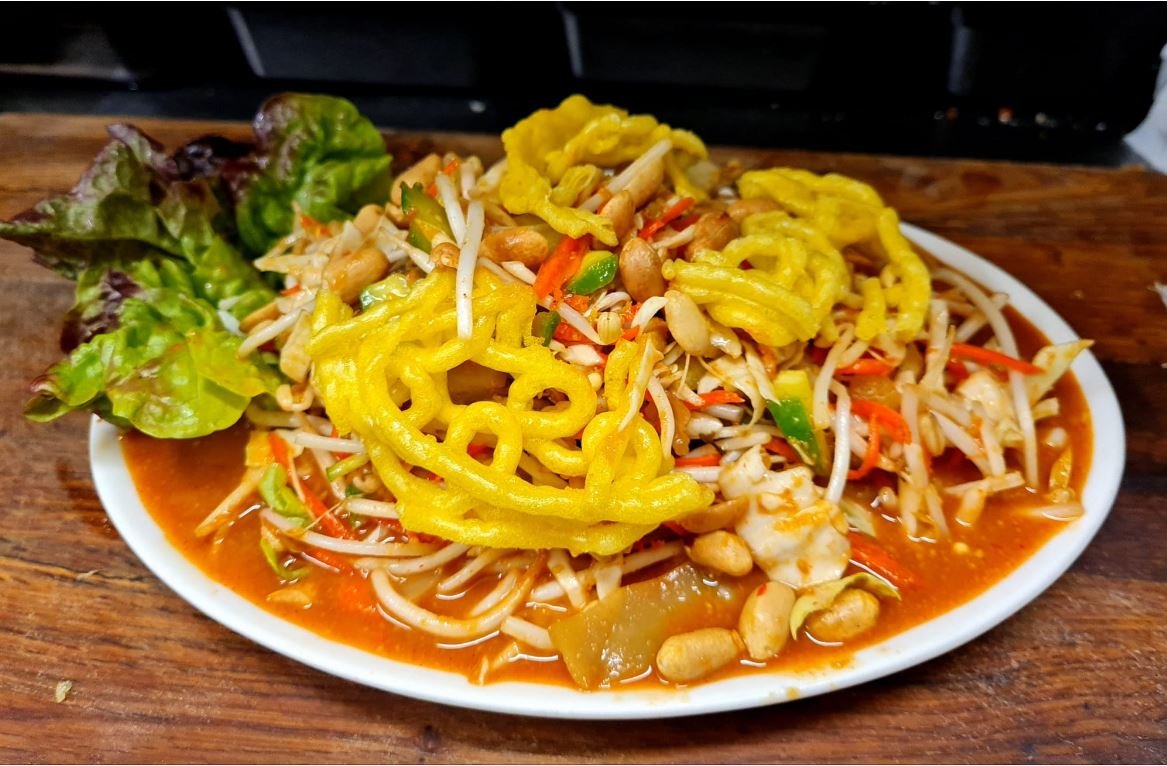
Of course. Here is a 1,200-word article about Tengkleng.
More Than Just Bones: Unearthing the Rich History and Fiery Flavors of Tengkleng
In the bustling culinary landscape of Indonesia, where every island boasts its own iconic dishes, there exists a soup from the royal city of Surakarta (Solo) that is as much a historical artifact as it is a meal. It is not a dish of plush, prime cuts, nor is it a creamy, comforting stew. Instead, it is a fiery, fragrant, and unapologetically bony broth called Tengkleng. To the uninitiated, a bowl of Tengkleng might seem like a collection of leftovers. But to those who know, it is a profound taste of Javanese history, ingenuity, and the soulful art of making something extraordinary from almost nothing.
At its heart, Tengkleng is a goat or mutton soup, but that description is deceptively simple. Unlike its more famous culinary cousins, gule and tongseng, Tengkleng is defined by what it uses: the bones. We’re talking ribs, spine, leg bones, and even the skull, all simmered for hours until what little meat remains is fall-apart tender. It also bravely incorporates offal—liver, lungs, intestines, and brain—adding layers of texture and deep, earthy flavor. The broth itself is the star. It is characteristically thin and water-based, a stark contrast to the thick, coconut-milk-laden gule. Yet, this thinness is its strength, allowing a complex symphony of spices to shine through with piercing clarity.

The name "Tengkleng" is itself a piece of onomatopoeic poetry. It is said to derive from the sound the goat bones make as they are stirred in the large metal wok, or wajan—a rhythmic “kleng-kleng-kleng” that echoes through the streetside stalls, or warungs, where it is most famously served. This sound is the dinner bell for those seeking a dish that warms the body and ignites the senses.
A Dish Born from Scarcity and Resilience
To truly understand Tengkleng, one must travel back in time to colonial-era Solo. As a center of Javanese aristocracy and culture, the city was home to both the Dutch colonialists and the Javanese nobility (priyayi). These elite classes had a taste for fine dining, and goat and mutton were prized meats. They savored the best cuts, which were skewered for succulent sate kambing (goat satay) or simmered into rich, creamy gule.
After the prime meat was claimed by the wealthy, what remained? The bones, the head, the feet, and the internal organs. These were the parts considered undesirable, the scraps left for the common folk, the laborers, and the servants. In an era of economic hardship, however, nothing was wasted. This is where the genius of Javanese home cooking, rooted in a philosophy of resourcefulness and respect for ingredients, came into play.
The common people took these humble leftovers and transformed them. Armed with an intimate knowledge of the archipelago’s spice bounty, they created a dish that could extract every last bit of flavor and nourishment from the bones. They couldn’t afford expensive coconut milk, so they used water. To compensate for the lack of fat and richness, they leaned heavily on a powerful blend of spices to create a broth that was intensely aromatic and profoundly flavorful. The heat from chilies not only added a desirable kick but also helped preserve the dish and mask any strong gamy notes.

Tengkleng, therefore, was born not in a palace kitchen but in the humble hearths of the people. It is a testament to their culinary resilience—a dish of defiance and creativity that turned the scraps of the rich into a delicacy of their own. This history is infused in every spoonful; it is a meal that tells a story of social class, economic struggle, and the enduring power of ingenuity.
The Symphony of Spices and the Art of the Simmer
The magic of Tengkleng lies in its bumbu, the complex spice paste that forms the foundation of its flavor. While recipes vary from one cook to another, the core components are a masterclass in Javanese seasoning. Shallots and garlic provide a sweet, aromatic base. Turmeric lends its earthy flavor and vibrant golden-orange hue. Galangal and ginger add a pungent, citrusy warmth, while lemongrass contributes a fresh, floral note.
These aromatics are ground together with a host of dry spices: coriander for its citrusy earthiness, cumin for its smoky depth, and candlenuts for a subtle creaminess that helps bind the flavors. Finally, a generous amount of bird’s eye chilies (cabe rawit) is added, providing the dish’s signature fiery kick. This paste is sautéed until fragrant, releasing an intoxicating aroma that is the hallmark of any good Tengkleng kitchen.
The cooking process is a patient one. The goat bones and offal are first boiled to clean them and begin the tenderizing process. Then, they are added to the sautéed spice paste along with water, bay leaves, and kaffir lime leaves. This concoction is left to simmer for hours. The long, slow cooking is crucial; it coaxes the marrow from the bones, melts the collagen from the cartilage, and allows the meat to absorb the complex spice profile completely. The result is a broth that is light in body but astonishingly deep in flavor—spicy, savory, fragrant, and slightly sweet, with a satisfyingly rich finish from the rendered bone marrow.

The Tengkleng Experience: A Primal and Satisfying Ritual
Eating Tengkleng is an interactive, hands-on experience that is as much a part of its identity as its ingredients. It is typically served in a small bowl with a side of steamed white rice. A fork and spoon are provided, but they are often secondary tools. The real joy of Tengkleng comes from picking up the bones with your hands, nibbling off the tender morsels of meat, and sucking the rich, savory marrow directly from the bone cavities. It can be a messy affair, but it is a primal and deeply satisfying one.
For the adventurous, tiny plastic straws are sometimes provided to get at the marrow deep within the larger bones. The broth is sipped between bites, a fiery elixir that cleanses the palate and prepares you for the next flavorful piece. The heat level can be intense, often inducing a sweat (berkeringat) and a panting "hoh-hah" sound from which some modern, extra-spicy versions derive their names, like "Tengkleng Hohah."
While Solo remains the undisputed capital of Tengkleng, its fame has spread throughout Java and beyond. It is most often found in humble warungs, often distinguished by a massive, bubbling cauldron set over a charcoal fire. In Solo, legendary stalls like Tengkleng Bu Edi in the Pasar Klewer market area have been serving the dish for decades, attracting locals and culinary pilgrims alike.
A Legacy in a Bowl

Over the decades, Tengkleng has completed a remarkable journey. It has evolved from a food of necessity for the poor into a celebrated culinary icon, sought after by people from all walks of life. What was once a symbol of scarcity is now a proud emblem of Solo’s gastronomic identity.
To eat Tengkleng today is to partake in a living tradition. It is to appreciate that the most profound flavors often come not from the most expensive ingredients, but from time, technique, and a deep understanding of spice. It is a reminder that in the world of food, creativity knows no class boundaries. Every slurp of its fiery broth, every morsel of meat gnawed from the bone, is a taste of Javanese history—a story of resilience, resourcefulness, and the enduring soul of a city captured in a simple, magnificent bowl of soup.


The Rich History and Fiery Flavors of Tengkleng pictures collections gallery
The Rich History and Fiery Flavors of Tengkleng is a nice pictures and stock photo for your computer desktop or your smartphone device (ipad, tablet, blackberry, iphone, and other device) and also for your personal use. Free available for desktop wallpaper or additional image collections for your all needs. And was uploaded by admit at date July 1, 2025. You can download it in your computer by clicking download button to save image... have nice day and have fun guys..
This 1 image in featured post from 0 Photos/images Gallery and awesome picture selections about The Rich History and Fiery Flavors of Tengkleng is available to download. "Download & Save" images/pictures/wallpapers now and this Is one of the post that listed in packed to Category is Foods directory, with image dimension/resolution size is 750 × 500 px and size image/picture file is 70 KB with original link post ID is : https://powae.pw/of-course-here-is-a-1200-word-article-about-tengkleng/. Get download/save images in post and gallery, "download" images or "preview" it on a bigger image for spesification sample in Large size (full attachment size) here : [Download & View to Large size]. Just Simple way, in thumbnail or in Gallery. *Click images to view Large Size.We collect this wonderful image from online and choose one of the best for you. Pictures collection that posted here was carefully chosen and published by author after choosing the ones which are best among the others. So, ultimately we make it and here these list of best image for your inspiration and informational reason regarding the The Rich History and Fiery Flavors of Tengkleng as part of blogsite exclusive updates collection. So, take your time and find the best informations and pictures posted here that suitable with your needs and use it for your own collection and personal use. About Image information: Image has been submitted and You are able to give your opinion as evaluations to our web site value.
Don't forget to comment if you interest with this images, you can share this post to social media like as facebook, twitter, google+, pinterest, stumbleupon, and more. just click social media buttons for share this post The Rich History and Fiery Flavors of Tengkleng Now. :)
Thanks for your visit, I hope you happy come to opo wae, wis opo wae, and get what you're looking for. And hope sometimes you will come back again here. All you need to do is help us develop by discussing this The Rich History and Fiery Flavors of Tengkleng if you like it "leave your comment". have fun, Thank you.




